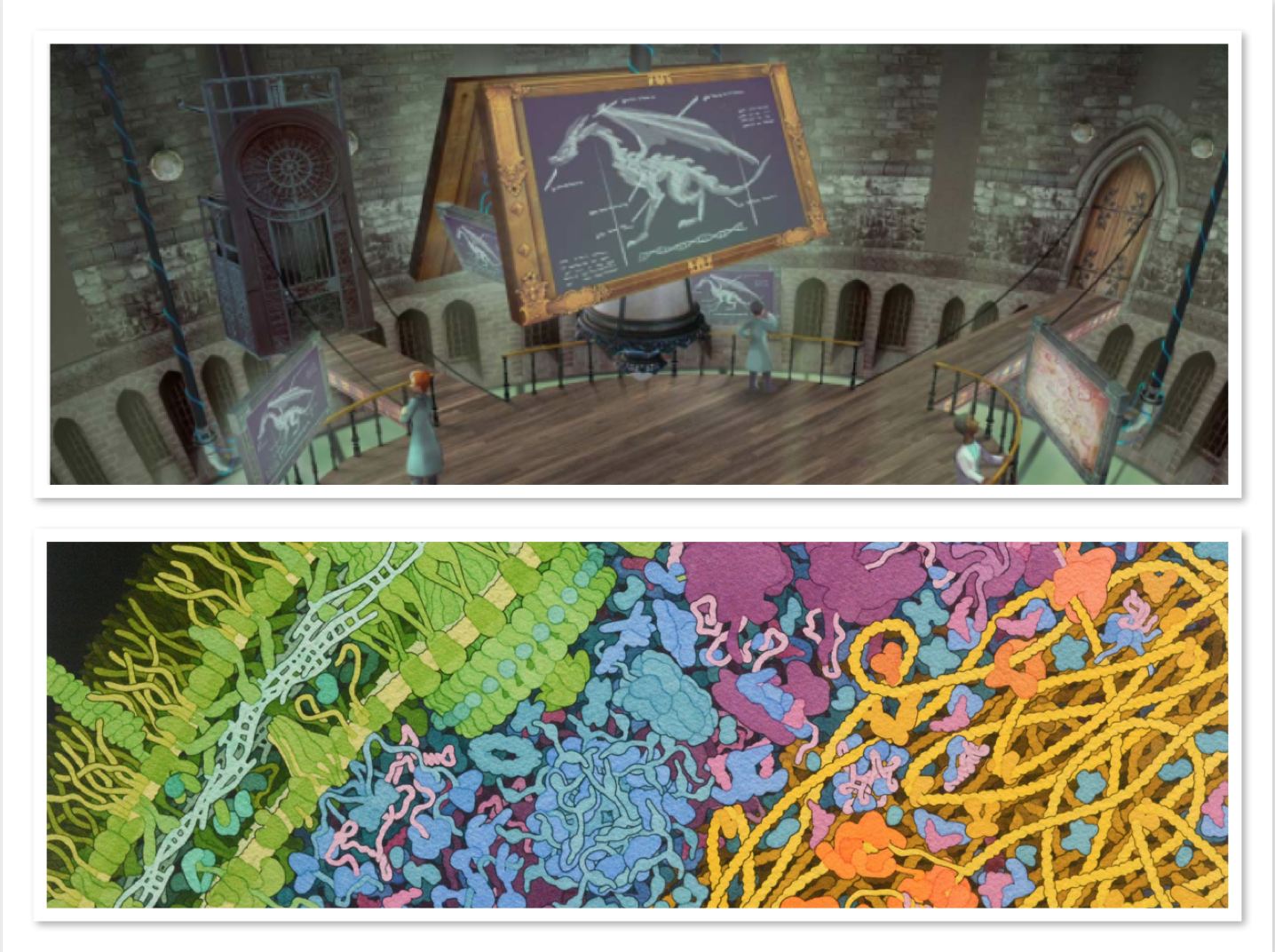Games are not just invigorating and fun, they also keep the players focussed and motivated to learn and do better – qualities that all educators wish to inculcate in their students. In this article, Saurabh Mahajan, a biologist and educator from Atria University, describes ways in which games can be used to achieve better learning of biological concepts, with the same excitement, motivation and focus in students.

This may be a familiar sight for a college educator- a bunch of students (mostly male, but occasionally female too) huddled together in the canteen, all intensely staring into the small screens in their hands, frantically moving fingers, and often, inanely shouting. The educator’s response to this scene is often one of disappointment, admonishment, or sometimes neglect. You perhaps know what I am describing here. The problems with digital gaming are extensively discussed and researched. But let’s try a different perspective and explore whether these scenes are telling us something else.
Through many years of my own education, and the past few years of teaching I have rarely seen so many students so sustainably excited, patiently engaged, and actively involved in anything! Moreover, it is something they have mastered on their own, and from their immediate and global peers. Excited, engaged, self-motivated, independent – sounds like a bunch of students from an educator’s dream! Then why is this not the average situation in our classrooms? One of my former students, who is an avid gamer, put the blame squarely on my shoulders- “if our classrooms were as exciting as the games, we would automatically pay more attention and be more engaged”. I am not sure I entirely agree with his analysis, but could we try to use games to make learning more engaging and effective?
Use of games in education and its potential
The idea of “play” (as in playfulness) is usually associated with activities performed for enjoyment out of intrinsic motivation without any material reward or explicit goal. “Play” has an important role in early childhood and later development and learning. A related idea is that of “gamification”, meaning the use of game-like elements, such as point systems, badges, leaderboards, Avatars, etc., for learning, education, or training. This has been widely adopted by ed-tech ventures. Although both play and gamification are related to games and are useful ideas, this article focuses on the use of games in the context of higher education in biology.
Using games in formal education is also not a new idea. A variety of digital and non-digital games are used in school education. This is evident from websites dedicated to STEM games, centres for games and learning, online resources, and popular and research articles documenting the impact of using games for learning (more links can be found at the end of the article). While this appears more common in some countries such as the US, there appears to be great enthusiasm for this in India too (e.g. recently organized Toycathon by the GoI). Games can positively influence motivational, behavioural, and cognitive aspects of learning (see this review for examples). Specifically, playing games shares some common features with learning effectively – active engagement, focused goal-oriented action, and continuous feedback resulting in constant improvement. Moreover, pure fun and enjoyment are essential parts of games and can increase student motivation and engagement, especially in dealing with challenging or otherwise tedious concepts.
Unfortunately, compared to its potential, the use of games does not appear to have received enough attention for undergraduate education, especially in India. In a small survey of current/recent undergraduates, 85% of students (of the 81 Indian students who responded to an online survey) had never or rarely played educational games. Some of them who did had done so outside their formal educational experience. On the other hand, 70% of students said that the idea of playing educational games sounds exciting, and almost all others were willing to play if these games were “interesting”. While other studies (see here and here) and results from our survey suggest differences in male and female students with respect to their current gaming habits (33% of males, but only 5% of females who participated in the survey said they were regular gamers), both male and female students were equally enthusiastic about playing educational games. Reassuringly, all teachers who responded to the survey (a very small sample size) were willing to use games as part of their teaching.
Incorporating games in undergraduate biology courses
Games could be used for several purposes in formal education programs. They could be used as course-starters to excite students towards a topic, as tools for revision of core concepts or ideas, to enable learning of challenging concepts, to enable application of learnt concepts to realistic situations, to enable independent discovery and in-depth investigations, and even to perform research!

Admittedly, developing new games can be a time-consuming and demanding task. Thus, a realistic starting point can be to look for existing games for a particular topic. This is easiest for certain basic and core topics in biology, such as cell biology, genetics, evolution etc. (although there are many games for other topics too). Many games developed for K‑12 students in the US (and available online) can be appropriate for use in introductory undergraduate courses or as tools for revision or reinforcement of core concepts for advanced courses. For instance, this genetics game (Fig. 1 Top) based on breeding dragons covers core concepts of heredity, Mendelian genetics, sex determination etc.
A second approach could be to design games based on simple and standard templates such as jigsaws or crosswords. For instance, imagine a Jigsaw puzzle made out of David Goodsell’s realistic images of a cell (Fig. 1 Bottom) or electron micrographs of cells. Such jigsaw puzzles could enable students to actively explore the structural features of cells or tissues and can be easily implemented using readymade online tools. This idea of developing games based on existing templates is also evident in many card-based games. These could involve the inventive use of usual playing cards, or the usage of custom-made cards (for example, this ecology card game based on bird species interactions).
Finally, some biology courses can include games that have successfully enabled deep engagement with complex scientific topics. For instance, FoldIt is a digital game about protein folding, which allows students to manipulate the 3D structure of proteins to discover stable configurations. Previously, this game has also been used to involve citizens in protein-folding research. Following its use as an undergraduate educational tool, the scientist-developers of this game recently also introduced a module specifically for biochemistry education. More games in this category include Eterna (designing RNAs), Eyewire (tracing neural circuits), Phylo (improving multiple sequence alignments) and others.
Educators’ and students’ experience
Megha and Madhumita Krishnan, faculty at the Transdisciplinary University (TDU) in Bangalore, effectively use simple games for specific requirements in teaching-learning. For example, after realizing that participants in an Ayurveda biology course struggled with learning the correspondence between English and Sanskrit terms, they designed a crossword-based game. To enable the application of concepts of Ayurveda dietetics, they designed another game where students had to combine 3 dishes to make diets complete with the Shadrasaas, somewhat like the popular pizza-making game- Good Pizza Great Pizza. Megha thinks that playing these games together made learning more fun for the course participants.
Leveraging the experience of the global educators’ community, I have incorporated the FoldIt game in a foundation biology course to enable students to discover and learn chemical interactions underlying protein structures. I am also encouraged by the experience of another former student. Manasa Sharma played FoldIt as a high-school and undergraduate student, and actually contributed to two research papers along with other players and researchers. She says, “the citizen science and research aspects of this game were actually more interesting than the curricular aspects”.
Looking ahead
There is much more one can do, after experiencing the benefits of using educational games. Megha is now actually looking to take on the challenge of further developing her games by collaborating with professional game developers. The professional game development community in India can be a great help here. In multi-disciplinary institutes, this could actually be a great avenue for cross-disciplinary collaborations between science, design, and digital technology departments.
Despite all these interesting possibilities, the limitations of game-based education also need attention. Games by necessity abstract out reality and thus, even for specific topics, game-based learning might need to be supplemented with other learning strategies. Another legitimate concern is the addition to already extensive screen time. On the other hand, games could help with making online learning more engaging- a challenge of the current time.
Finally, one may worry that games will take away time from “serious” learning. If this thought crosses the mind, all one needs to do is remember the feeling of joy the last time one played a game. And decide to give joyful and playful education a chance.